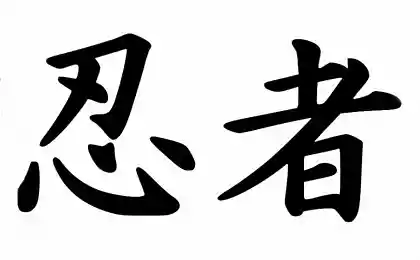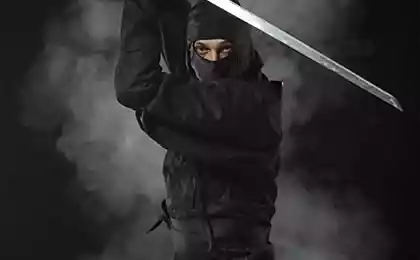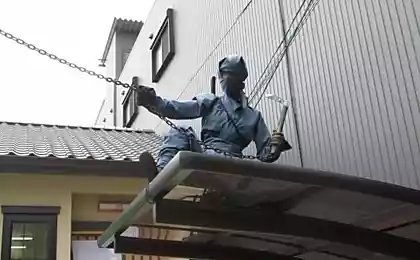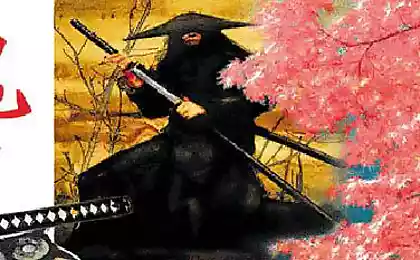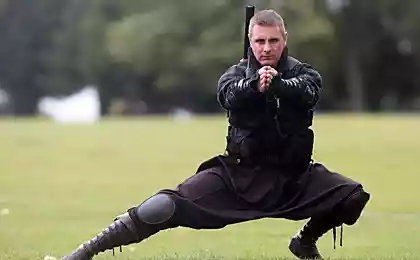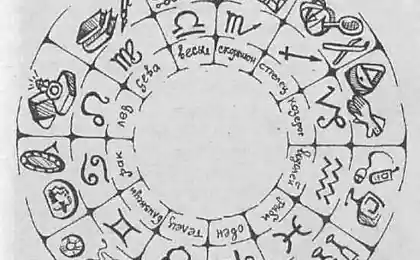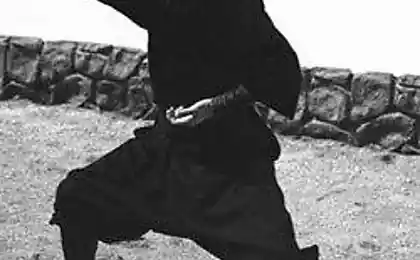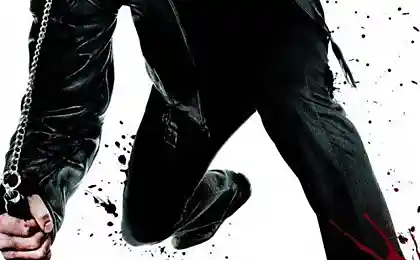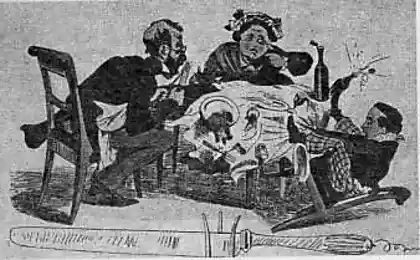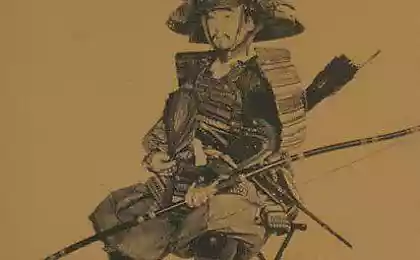2488
Ninja: these silent, invisible spies and assassins
Ninja: these silent, invisible spies and assassins of the Japanese Sengoku period (Sengoku) occupied the imagination of people around the world. Many of them have been romanticized and idealized, but we should not forget that in a certain period of time ninja really existed. Because of the rather secretive nature ninja of them have very few official data, and many of them are shrouded in myths and legends. Despite the fact that in this list, we will try to tell about the "actually existing" Ninja, the question of whether some of them are real ninja or not, remains controversial, and in some cases is difficult to say with absolute certainty whether they really existed.
10. Yazaemon Kido (Kido Yazaemon)
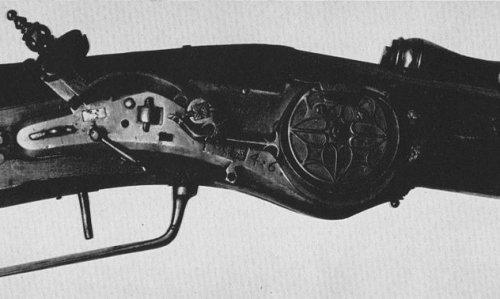
Yazaemon Kido was a ninja from the province of Iga (Iga), born about 1539. In all likelihood, he was a master of tanegasimskoy arquebus (Tanegashima arquebus), a type of rifle matchlock. Based on the fact that it was his arquebus weapon of choice, we can assume that Yazaemon expertly versed in explosives and majored in Teppo-jutsu (teppo-jutsu), sub Katon jutsu but (katon-nojutsu), or methods of firing. Contrary to popular belief, firearms, such as the arquebus, was the favorite weapon of ninja and actually regularly used by them in their attempts at murder.
However, the famous Yazaemon exactly as he tried to kill military and political leader of Oda Nobunaga (Oda Nobunaga) in 1579. This attempt, which, despite the fact that ended in failure, yet it was remarkable enough to write it down in Iranian (Iranki), a historical document, which tells the story of a ninja Iga province. During the attempt, and the other two Yazaemon ninja shot Nobunaga while he conducted his examination of the consequences of the invasion. They missed, but in the end, they managed to kill seven men of his escort.
9. Kirigakure bed (Kirigakure Saizo)

Kirigakure bed is best known as a source of inspiration for the fictional ninja: Kirigakure bed, deputy commander of the group of ninjas known as the "Ten brave Sanada» (Sanada Ten Braves), where he was under the direction of an opponent and friend Sarutobi Sasuke (Sarutobi Sasuke). As for the real Kirigakure of history, according to historical records, from the province of Iga ninja named "Kirigakure size" (it is believed that the name is a pseudonym used by a man named Kirigakure Shikaemon (Kirigakure Shikaemon)), once committed attempted murder and war politician Toyotomi Hideyoshi (Toyotomi Hideyoshi), thrusting a spear through the floor, right under Hideyoshi.
Attempt ended in failure, and Kirigakure was left alive on the condition that he will bring oath of allegiance Toyotomi clan. In fact, there are some sources indicating that the bed was "careless ninja" who just spied Hideyoshi when he was caught. However, due to the fact that he was caught, he eventually prevented real attempt on Hideyoshi, who is trying to make a double agent Yusuke Takiguchi (Yusuke Takiguchi). This was the real reason why he was left alive on the condition that he will bring oath of allegiance Hideyoshi.
8. Tomo Sukesada (Tomo Sukesada)

Tomo was Sukesada Jounin (jonin) (Ninja Master) Koga (Koga), as well as the head of the school traditions Tomo Ryu (Tomo Ryu). In 1562, Tokugawa Ieyasu (Tokugawa Ieyasu), worked for Oda Nobunaga destroyed the remnants of the genus Imagawa (Imagawa) after their defeat in the Battle of Okehazama (Battle of Okehazama), which occurred two years earlier. Unwilling to give up without a fight, representatives of the Imagawa under General Imagawa named Udon Nagamochi (Udono Nagamochi) dug in the castle Kaminogou (Kaminogou), located in an extremely favorable strategic position on a cliff.
Taking the castle is rather difficult to Tokugawa Ieyasu, especially based on the fact that the Imagawa taken hostage several members of his family. Therefore, Ieyasu hired 80 Koga ninja school, led by Sukesada to sneak into the castle to the Imagawa. Working together with Hattori Hanzō (Hattori Hanzo), Sukesada and 80 slaves they Koga ninja sneak into the castle, set fire to the tower and killed 200 people, made up the garrison, including General. This event is described in detail in Fudoki of Mikawa (Mikawa Go Fudoki).
7. Fudzibayasi Nagato (Fujibayashi Nagato)
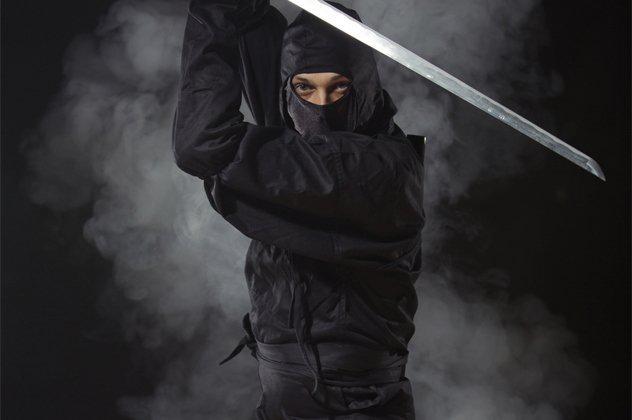
According to legend, Fudzibayasi Nagato was one of the three greatest Jounin Iga, along with Momochi Sandal (Momochi Sandayu) and Hattori Hanzō. He was also one of the leaders of the Iga ninja, along with Momochi sandalwood. In addition, we know about it is not much. In 1581, Oda Nobunaga started a fierce attack on Iga province, which was called the War of Tensho Iga (Tensho Iga War). As a result of this attack, and Iga ninja clans Koga were almost completely destroyed. Ninja survivors had to go to the service of Tokugawa Ieyasu, and Nagato was killed during the attack.
Nevertheless, in spite of how little we know about his life, Nagato actually left behind an important legacy: his descendants eventually collected knowledge of Ninjutsu (ninjutsu), which he left behind, and created a guide Ninjutsu called Bansenshukai (Bansenshukai). Bansenshukai this multi-volume collection of "secrets" and techniques of a ninja, written originally Fudzibayasi. Most of the information about the ninja available to us today, was obtained from this collection.
6. Chiyome Mochizuki (Mochizuki Chiyome)
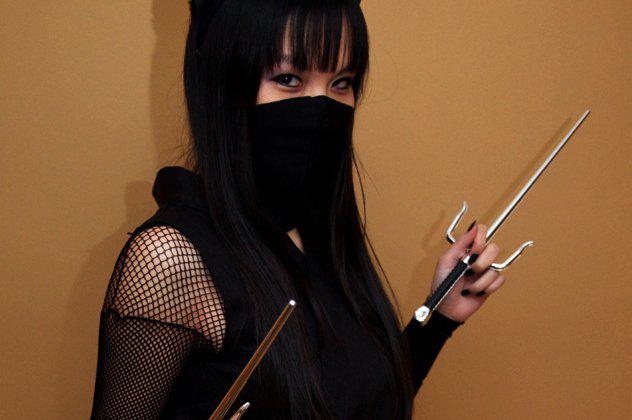
Chiyome Mochizuki quite possibly the most well-known Kunoichi (kunoichi) (female ninja) of all. She was an aristocrat, wife of the samurai warlord Mochizuki Nobumasa (Mochizuki Nobumasa), and is rumored to have been born from a sort of ninja Koga. At some point during the 16th century, her husband was in the war, and Chiyome remained in the care of her husband's uncle, the famous daimyo Takeda Shingen (Takeda Shingen). Shingen Chiyome called and gave her a job and recruit women to start their coach that they have formed an underground network of spies.
Chiyome established headquarters in the village of Natsu (Nazu) in the region Shinshu (Shinshu) and recruited about 300 young women who were mostly orphans, former prostitutes and victims of war. While most of the locals believed that Chiyome contained informal shelter for affected girls Chiyome actually train them, so that they become part of the complex spy network. Trained in the use of masking techniques as miko (priestess Shinto shrine), a prostitute, or a geisha in order to espionage or murder, the network Kunoichi Chiyome Shingen served for many years, until his mysterious death in 1573.
5. Ishikawa Goemon (Ishikawa Goemon)
Despite the fact that the Iga Ninja and Koga did not want to take him into their ranks, no list of these ninja would not be complete without a mention of Ishikawa Goemon. Born in 1558 Ishikawa Goemon was an outcast who stole from the rich and give to the poor - he was a Japanese version of Robin Hood. Despite the lack of actual confirmation of these data, according to legend, Goemon was originally Jenin (genin) (apprentice ninja) Iga, and before he became nukeninom (nukenin) (fugitive ninja), taught him Sandal Mochizuki (Sandayu Mochizuki). < br />
He became the leader of a group of bandits in the Kansai region (Kansai) and constantly robbing the rich feudal lords, clergy and merchants and shared their wealth with the oppressed peasants. Presumably, he was caught after a failed assassination attempt on Toyotomi Hideyoshi murder and publicly boiled alive in 1594. Legend tells of how he kept his young son over his head while standing in boiling water, although there are conflicting stories about whether his son survived or not.
4. Momochi Sandal (Momochi Sandayu)
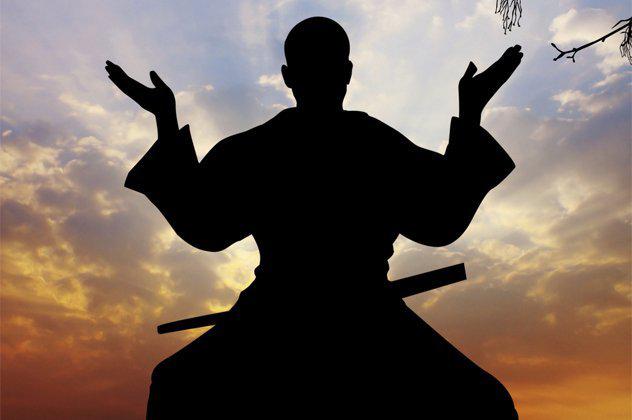
Ishikawa Goemon from the previous paragraph, was supposed to be a disciple of Momochi Sandal before he became nukeninom. Sandal Momochi was one of the founders of Iga-ryu ninjutsu (Iga Ryu Ninjutsu), and is considered one of the three greatest Jounin Iga, along with Hattori Hanzō and Fudzibayasi Nagato. Sandal real name was Momcilo Tanbit Yasumitsu (Momchi Tanbe Yasumitsu), although according to some sources, they were different people. Moreover, there are a number of sources, suggesting that sandalwood and Fudzibayasi Nagato were actually one and the same person.
However, regardless of who Momochi was actually believed that he was killed in 1581 when Oda Nobunaga attacked Iga province during the War of Tensho Iga, which resulted in the Iga Ninja and Koga were almost completely destroyed. One of the ways in which acted sandals, was the content of three different homes with three different wives and families. When the situation became unfavorable for him, he simply moved to one of the other two houses and took another person.
Fuma Kotaro 3. (Fuma Kotaro)
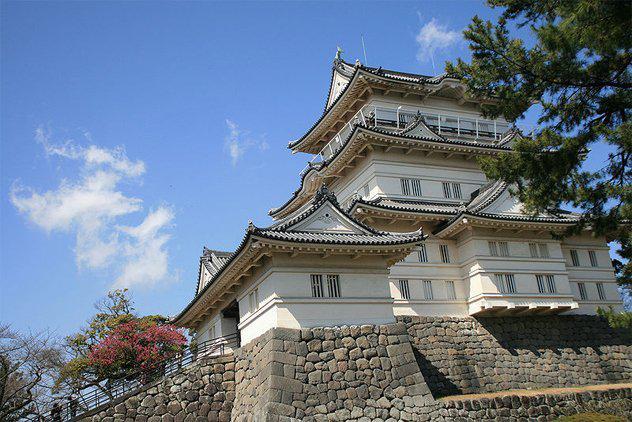
The genus is unique among Fuma ninja that it was formed independently of the Iga and Koga and served as a sort of samurai Hojo (Hojo clan) in Odawara (Odawara). Fuma Kotaro Jounin was the leader of its kind in the fifth generation, as well as the most famous of them. At that time, Fuma clan was a gang of 200 RAAPA (rappa) (saboteurs) worked as thieves, pirates and thieves for the kind samurai Hojo. In 1580, the son of Takeda Shingen named Katsuyori (Katsuyori) attacked the Hojo in Odawara Castle (Odawara Castle).
Night Kotaro and his men secretly infiltrated the camp Takeda and caused so much division and chaos that people Takeda in turmoil began to kill each other. In 1590, the Hojo were defeated by Toyotomi Hideyoshi and Fuma become common bandits. Popular (though most likely fictional) story is that in 1596 Kotaro killed Hattori Hanzō, but then was betrayed by a former ninja named Takeda Dzhinnay Kosaka (Kosaka Jinnai), and finally beheaded on the orders of Tokugawa Ieyasu in 1603 year.
2. Kato Danzo (Kato Danzo)

Kato Danzo in many ways was the ninja who popularized the notion that ninja possess supernatural powers. Danzo was an illusionist, who is considered by many to be a real witch. His tricks included ingestion of a bull in front of the crowd, instant induction of seed germination and flowering at the moment when they were thrown to the ground, and even the flights, which is why he had the nickname Toby Kato (Kato flying). To date, researchers believe that it must have been a master of hypnosis, although there is no way to verify this.
In any case, the reputation of Kato, eventually attracted the attention of Uesugi Kenshin (Uesugi Kenshin), who decided to test the ability of the ninja. He suggested Danzo steal highly valued naginata (naginata) (long sword) in one of his vassals named Kanetsugu Naoe (Naoe Kanetsugu). Danzo not only successfully entered the castle, which was under heavy guard and stole naginata, but also took with him the girl working in a castle servant. Impressed by his skills Kenshin offered Danzo work, but Danzo, in the end, was in the doghouse, or because Kanetsugu wove intrigues against him, and maybe because of the fact that he began to arouse suspicion from Kenshin. Ultimately, Danzo went to the enemy Kenshin, Takeda Shingen, but this decision proved fatal when Shingen suspected him that he was a double agent, and ordered him to kill. Danzo was beheaded in 1569.
1. Hattori Hanzō (Hattori Hanzo)
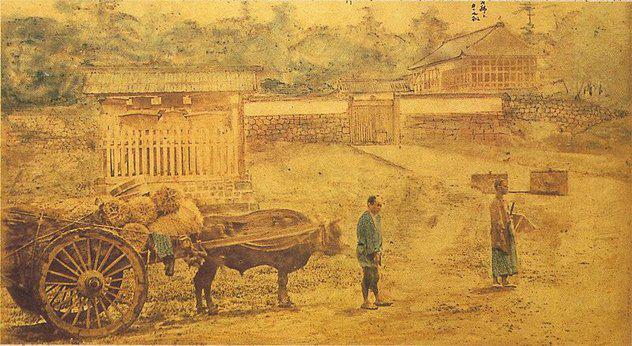
Hattori Hanzō likely, is the most famous ninja of all time. He was a vassal and a samurai in the service of Tokugawa Ieyasu, and is a major driving force by which Ieyasu became shogun (shogun) and ruler of all Japan. Handzo, who grew up in the province of Iga, first distinguished himself in the battles of the 1570s period. His most famous moment occurred in 1582: When Oda Nobunaga was killed after the betrayal of one of his vassals, Akechi Mitsuhide (Akechi Mitsuhide), Tokugawa Ieyasu suddenly found himself in a very dangerous position in the vicinity of Mitsuhide. To facilitate passage of Ieyasu on Iga province to secure for him the province of Mikawa, Handzo gathered his companions Iga ninjas and their former rivals of the genus Koga, to accompany Ieyasu in a safe place.
There are some sources that suggest that Handzo helped rescue the captured family Ieyasu. Hadza, a skilled fighter with a spear and a great strategist, faithfully served the Tokugawa family all his life. Under his leadership, Iga Ninja became palace guard Tokugawa shogunate in Edo Castle (Edo), and eventually became a secret agency called Oniwabanshū shogunate (Oniwabanshu). After the death of Handzo in 1596, his successor took the name "Hattori Hanzō", and this practice has become a tradition for executives Iga ninjas and perpetuate the myth that Hattori Hanzō was immortal
©
10. Yazaemon Kido (Kido Yazaemon)

Yazaemon Kido was a ninja from the province of Iga (Iga), born about 1539. In all likelihood, he was a master of tanegasimskoy arquebus (Tanegashima arquebus), a type of rifle matchlock. Based on the fact that it was his arquebus weapon of choice, we can assume that Yazaemon expertly versed in explosives and majored in Teppo-jutsu (teppo-jutsu), sub Katon jutsu but (katon-nojutsu), or methods of firing. Contrary to popular belief, firearms, such as the arquebus, was the favorite weapon of ninja and actually regularly used by them in their attempts at murder.
However, the famous Yazaemon exactly as he tried to kill military and political leader of Oda Nobunaga (Oda Nobunaga) in 1579. This attempt, which, despite the fact that ended in failure, yet it was remarkable enough to write it down in Iranian (Iranki), a historical document, which tells the story of a ninja Iga province. During the attempt, and the other two Yazaemon ninja shot Nobunaga while he conducted his examination of the consequences of the invasion. They missed, but in the end, they managed to kill seven men of his escort.
9. Kirigakure bed (Kirigakure Saizo)

Kirigakure bed is best known as a source of inspiration for the fictional ninja: Kirigakure bed, deputy commander of the group of ninjas known as the "Ten brave Sanada» (Sanada Ten Braves), where he was under the direction of an opponent and friend Sarutobi Sasuke (Sarutobi Sasuke). As for the real Kirigakure of history, according to historical records, from the province of Iga ninja named "Kirigakure size" (it is believed that the name is a pseudonym used by a man named Kirigakure Shikaemon (Kirigakure Shikaemon)), once committed attempted murder and war politician Toyotomi Hideyoshi (Toyotomi Hideyoshi), thrusting a spear through the floor, right under Hideyoshi.
Attempt ended in failure, and Kirigakure was left alive on the condition that he will bring oath of allegiance Toyotomi clan. In fact, there are some sources indicating that the bed was "careless ninja" who just spied Hideyoshi when he was caught. However, due to the fact that he was caught, he eventually prevented real attempt on Hideyoshi, who is trying to make a double agent Yusuke Takiguchi (Yusuke Takiguchi). This was the real reason why he was left alive on the condition that he will bring oath of allegiance Hideyoshi.
8. Tomo Sukesada (Tomo Sukesada)

Tomo was Sukesada Jounin (jonin) (Ninja Master) Koga (Koga), as well as the head of the school traditions Tomo Ryu (Tomo Ryu). In 1562, Tokugawa Ieyasu (Tokugawa Ieyasu), worked for Oda Nobunaga destroyed the remnants of the genus Imagawa (Imagawa) after their defeat in the Battle of Okehazama (Battle of Okehazama), which occurred two years earlier. Unwilling to give up without a fight, representatives of the Imagawa under General Imagawa named Udon Nagamochi (Udono Nagamochi) dug in the castle Kaminogou (Kaminogou), located in an extremely favorable strategic position on a cliff.
Taking the castle is rather difficult to Tokugawa Ieyasu, especially based on the fact that the Imagawa taken hostage several members of his family. Therefore, Ieyasu hired 80 Koga ninja school, led by Sukesada to sneak into the castle to the Imagawa. Working together with Hattori Hanzō (Hattori Hanzo), Sukesada and 80 slaves they Koga ninja sneak into the castle, set fire to the tower and killed 200 people, made up the garrison, including General. This event is described in detail in Fudoki of Mikawa (Mikawa Go Fudoki).
7. Fudzibayasi Nagato (Fujibayashi Nagato)

According to legend, Fudzibayasi Nagato was one of the three greatest Jounin Iga, along with Momochi Sandal (Momochi Sandayu) and Hattori Hanzō. He was also one of the leaders of the Iga ninja, along with Momochi sandalwood. In addition, we know about it is not much. In 1581, Oda Nobunaga started a fierce attack on Iga province, which was called the War of Tensho Iga (Tensho Iga War). As a result of this attack, and Iga ninja clans Koga were almost completely destroyed. Ninja survivors had to go to the service of Tokugawa Ieyasu, and Nagato was killed during the attack.
Nevertheless, in spite of how little we know about his life, Nagato actually left behind an important legacy: his descendants eventually collected knowledge of Ninjutsu (ninjutsu), which he left behind, and created a guide Ninjutsu called Bansenshukai (Bansenshukai). Bansenshukai this multi-volume collection of "secrets" and techniques of a ninja, written originally Fudzibayasi. Most of the information about the ninja available to us today, was obtained from this collection.
6. Chiyome Mochizuki (Mochizuki Chiyome)

Chiyome Mochizuki quite possibly the most well-known Kunoichi (kunoichi) (female ninja) of all. She was an aristocrat, wife of the samurai warlord Mochizuki Nobumasa (Mochizuki Nobumasa), and is rumored to have been born from a sort of ninja Koga. At some point during the 16th century, her husband was in the war, and Chiyome remained in the care of her husband's uncle, the famous daimyo Takeda Shingen (Takeda Shingen). Shingen Chiyome called and gave her a job and recruit women to start their coach that they have formed an underground network of spies.
Chiyome established headquarters in the village of Natsu (Nazu) in the region Shinshu (Shinshu) and recruited about 300 young women who were mostly orphans, former prostitutes and victims of war. While most of the locals believed that Chiyome contained informal shelter for affected girls Chiyome actually train them, so that they become part of the complex spy network. Trained in the use of masking techniques as miko (priestess Shinto shrine), a prostitute, or a geisha in order to espionage or murder, the network Kunoichi Chiyome Shingen served for many years, until his mysterious death in 1573.
5. Ishikawa Goemon (Ishikawa Goemon)
Despite the fact that the Iga Ninja and Koga did not want to take him into their ranks, no list of these ninja would not be complete without a mention of Ishikawa Goemon. Born in 1558 Ishikawa Goemon was an outcast who stole from the rich and give to the poor - he was a Japanese version of Robin Hood. Despite the lack of actual confirmation of these data, according to legend, Goemon was originally Jenin (genin) (apprentice ninja) Iga, and before he became nukeninom (nukenin) (fugitive ninja), taught him Sandal Mochizuki (Sandayu Mochizuki). < br />
He became the leader of a group of bandits in the Kansai region (Kansai) and constantly robbing the rich feudal lords, clergy and merchants and shared their wealth with the oppressed peasants. Presumably, he was caught after a failed assassination attempt on Toyotomi Hideyoshi murder and publicly boiled alive in 1594. Legend tells of how he kept his young son over his head while standing in boiling water, although there are conflicting stories about whether his son survived or not.
4. Momochi Sandal (Momochi Sandayu)

Ishikawa Goemon from the previous paragraph, was supposed to be a disciple of Momochi Sandal before he became nukeninom. Sandal Momochi was one of the founders of Iga-ryu ninjutsu (Iga Ryu Ninjutsu), and is considered one of the three greatest Jounin Iga, along with Hattori Hanzō and Fudzibayasi Nagato. Sandal real name was Momcilo Tanbit Yasumitsu (Momchi Tanbe Yasumitsu), although according to some sources, they were different people. Moreover, there are a number of sources, suggesting that sandalwood and Fudzibayasi Nagato were actually one and the same person.
However, regardless of who Momochi was actually believed that he was killed in 1581 when Oda Nobunaga attacked Iga province during the War of Tensho Iga, which resulted in the Iga Ninja and Koga were almost completely destroyed. One of the ways in which acted sandals, was the content of three different homes with three different wives and families. When the situation became unfavorable for him, he simply moved to one of the other two houses and took another person.
Fuma Kotaro 3. (Fuma Kotaro)

The genus is unique among Fuma ninja that it was formed independently of the Iga and Koga and served as a sort of samurai Hojo (Hojo clan) in Odawara (Odawara). Fuma Kotaro Jounin was the leader of its kind in the fifth generation, as well as the most famous of them. At that time, Fuma clan was a gang of 200 RAAPA (rappa) (saboteurs) worked as thieves, pirates and thieves for the kind samurai Hojo. In 1580, the son of Takeda Shingen named Katsuyori (Katsuyori) attacked the Hojo in Odawara Castle (Odawara Castle).
Night Kotaro and his men secretly infiltrated the camp Takeda and caused so much division and chaos that people Takeda in turmoil began to kill each other. In 1590, the Hojo were defeated by Toyotomi Hideyoshi and Fuma become common bandits. Popular (though most likely fictional) story is that in 1596 Kotaro killed Hattori Hanzō, but then was betrayed by a former ninja named Takeda Dzhinnay Kosaka (Kosaka Jinnai), and finally beheaded on the orders of Tokugawa Ieyasu in 1603 year.
2. Kato Danzo (Kato Danzo)

Kato Danzo in many ways was the ninja who popularized the notion that ninja possess supernatural powers. Danzo was an illusionist, who is considered by many to be a real witch. His tricks included ingestion of a bull in front of the crowd, instant induction of seed germination and flowering at the moment when they were thrown to the ground, and even the flights, which is why he had the nickname Toby Kato (Kato flying). To date, researchers believe that it must have been a master of hypnosis, although there is no way to verify this.
In any case, the reputation of Kato, eventually attracted the attention of Uesugi Kenshin (Uesugi Kenshin), who decided to test the ability of the ninja. He suggested Danzo steal highly valued naginata (naginata) (long sword) in one of his vassals named Kanetsugu Naoe (Naoe Kanetsugu). Danzo not only successfully entered the castle, which was under heavy guard and stole naginata, but also took with him the girl working in a castle servant. Impressed by his skills Kenshin offered Danzo work, but Danzo, in the end, was in the doghouse, or because Kanetsugu wove intrigues against him, and maybe because of the fact that he began to arouse suspicion from Kenshin. Ultimately, Danzo went to the enemy Kenshin, Takeda Shingen, but this decision proved fatal when Shingen suspected him that he was a double agent, and ordered him to kill. Danzo was beheaded in 1569.
1. Hattori Hanzō (Hattori Hanzo)

Hattori Hanzō likely, is the most famous ninja of all time. He was a vassal and a samurai in the service of Tokugawa Ieyasu, and is a major driving force by which Ieyasu became shogun (shogun) and ruler of all Japan. Handzo, who grew up in the province of Iga, first distinguished himself in the battles of the 1570s period. His most famous moment occurred in 1582: When Oda Nobunaga was killed after the betrayal of one of his vassals, Akechi Mitsuhide (Akechi Mitsuhide), Tokugawa Ieyasu suddenly found himself in a very dangerous position in the vicinity of Mitsuhide. To facilitate passage of Ieyasu on Iga province to secure for him the province of Mikawa, Handzo gathered his companions Iga ninjas and their former rivals of the genus Koga, to accompany Ieyasu in a safe place.
There are some sources that suggest that Handzo helped rescue the captured family Ieyasu. Hadza, a skilled fighter with a spear and a great strategist, faithfully served the Tokugawa family all his life. Under his leadership, Iga Ninja became palace guard Tokugawa shogunate in Edo Castle (Edo), and eventually became a secret agency called Oniwabanshū shogunate (Oniwabanshu). After the death of Handzo in 1596, his successor took the name "Hattori Hanzō", and this practice has become a tradition for executives Iga ninjas and perpetuate the myth that Hattori Hanzō was immortal
©
